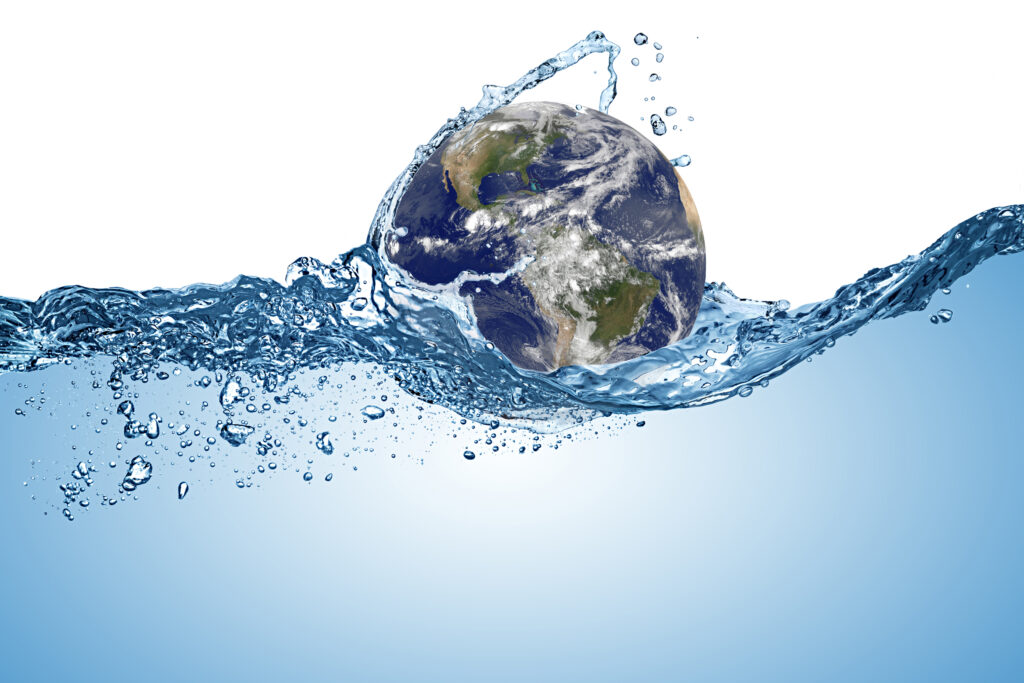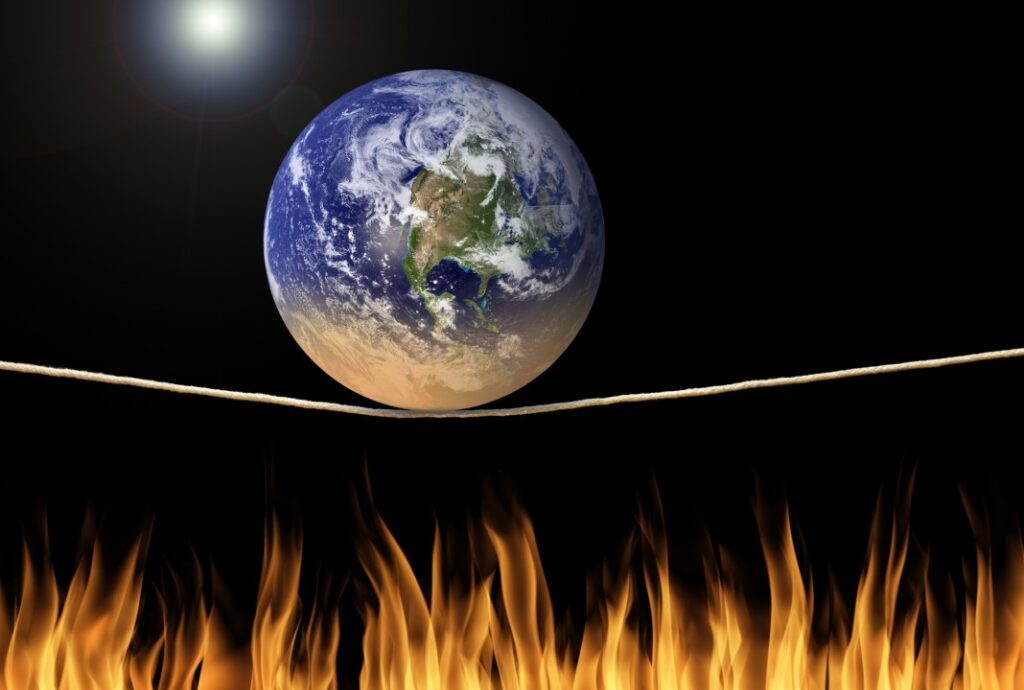
Exploring climate fiction is a journey into scientific, political, social, economic, epidemiological, zoological, philosophical, and practical new horizons. Last week’s post on how authors are grappling with the climate crisis really struck a chord!
Thanks to the readers who suggested some of their favorite titles and sent me links to additional resources. Here are two good ones: The website Cli-Fi.net is a treasure trove of links to news and popular culture references to cli-fi. The Econ-SF wiki of books at the nexus of economics and sci-fi has some intriguing cli-fi recommendations, several of which are included below.
Forthwith, loosely sorted by theme but otherwise in no particular order, is a list of cli-fi books. Many are fairly new, but I’ve also included a few earlier books that paved the way. No doubt this list is woefully incomplete.
I’ve read a few of the novels below. Others are by authors who have written other books I’ve enjoyed, and the rest are now on my to-read list. Some come from the lists I shared last week, some from recommendations from friends and colleagues both on and off of LinkedIn.
Authors Who Are Sub-Genres Unto Themselves
Kim Stanley Robinson’s many books of speculative climate fiction are practically a sub-genre unto themselves: 2312, New York 2140, and the Science in the Capital series (Forty Signs of Rain, Fifty Degrees Below, Sixty Days and Counting) all look at the world after climate collapse. The Ministry for the Future (2020) imagines efforts to keep the collapse from happening. Other works by this extremely prolific writer, while not strictly about climate change, explore outposts on other planets, where humans presumably end up after ruining much or all of ours.
Margaret Atwood’s MaddAddam trilogy explores what might happen in the aftermath of environmental collapse. The first installment, Oryx and Crake (2004) explores a world where humans have been decimated by a plague and genetic engineering gone wrong. The second, The Year of the Flood (2010) takes readers through the aftermath of the Waterless Flood, a pandemic. In the final book of the trilogy, MaddAddam (2014), the Children of Crake, the bio-engineered successors to humans, forge a new future.
Biodiversity Loss
Amanda Kool, Resembling Lepus (2022) After Earth’s Sixth Great Extinction, humans have supplemented natural fauna with high-quality replicas. Every living thing –both natural and human-created—is tracked, numbered, and categorized. A detective’s quest to solve a series of strangely staged murders of rabbits raises another question: What is the impact on humanity when mankind is required to play god to the creatures they have all but destroyed?
Michael Christie, Greenwood (2020) In this Canadian writer’s eco-parable, a new fungus is killing off the last trees of the last remaining forests in what is known as “the great withering” in 2038 -not so far in the future from now. (reviewed in The Guardian)
Barbara Kingsolver’s Flight Behaviour (2012) imagines the catastrophic effects when pollution and other environmental disruptions send an entire colony of butterflies off track. No doubt you’ve heard of the butterfly effect whereby a single butterfly flapping its wings can cause a hurricane on the other side of the planet. Now think about that magnified many, many times over. (Read all the way to the bottom of this review in The Guardian for one of the funniest corrections I’ve seen.) While not strictly cli-fi, many of her other works engage the environment so closely as for it to count as a character.
Sarah Blake, Clean Air (2022) Decades after a climate apocalypse in which trees suffocated humans with pollen, a serial killer stalks the residents of the domes in which humanity rebuilt a new society.
Charlotte McConaghy, Migrations (2021) (The Last Migration in the UK)The protagonist of this Australian writer’s acclaimed novel tracks the world’s last Arctic terns across the high seas – migrating birds for what may be their last time– in search of the last fish. The Economist describes it as “Moby Dick for the age of climate change.”
Richard Powers, The Overstory (2018) This Pulitzer Prize–winning novel follows five trees and nine people across generations as a complex environmental catastrophe unfolds. (From The Guardian)
Security, War, Pandemics, and Other Cataclysms
Neal Stephenson, Termination Shock (2021) A geo-engineering scheme goes badly awry. Several people have mentioned this one, completely unprompted, so it’s high on my to-read list.
Jeff VanderMeer, Hummingbird Salamander (2020) A fast-paced thriller following a missing eco-terrorist.
Bethany Clift, Last One at the Party (2021) The diary of the sole human survivor of a pandemic and her golden retriever sidekick. (You knew I had to get a dog in this list somehow, right?)
Omar El Akkad, American War (2017) Northern U.S states outlaw fossil fuels in 2074, provoking a second civil war.
Tobias S. Buckell, Stochasticity, (2008) Eco-terrorists roam a dystopian post-fossil-fuel Detroit.
Tochi Onyebuchi, War Girls (2019) In 2172, two Nigerian sisters separated by civil war attempt to reunite after global climate and nuclear apocalypse.
Migration
Niall Bourke, Line (2021) This Irish writer’s fictional world is centered on the Line, a tented community and a state of the perpetual waiting, depending on whether you take things literally or metaphorically, in a world where people barely subsist
Amitav Ghosh, Gun Island (2019) The Guardian describes this novel, focused on mass migrations of humans, languages, and animals, as the author’s answer to his own 2016 accusation that fiction writers were complicit in climate denial.
Water: Scarcity and Flooding
Paolo Bacigalupi, The Water Knife (2015) In a world where water is worth more than gold and the Colorado River is drying up, this thriller “deftly explores corporate greed, social inequality, deregulation, and privatization.”
Stephen Baxter, Flood (2009) and Ark (2011) This two-part series begins in 2016 -an interesting twist that puts the protagonists in what is now the recent past, though both were written just a few years before then– and continues for the next 42 years as the oceans rise higher and higher.
J.G. Ballard, The Drowned World (1962): Set in 2045 in a world that climate change has rendered barely livable, this novel is an early, prescient, precursor to today’s cli-fi.
Jessie Greengrass, The High House (2021) A family takes refuge in a house built high on a bluff, protected from floods and pandemic, amidst an increasingly uninhabitable world. “As I grew up, crisis slid from distant threat to imminent probability, and we tuned it out like static. We adjusted to each emergent normality and we did what we had always done,” one of the survivors laments.
Emmi Itäranta, Memory of Water (2014) In the future, when wars are waged over water, tea masters are entrusted with the knowledge of remaining stashes of the precious liquid.
John Lanchester, The Wall (2019) In this Pulitzer Prize winning novel, young “defenders” patrol Britain after it erected a fortress along its shores to protect the nation from rising seas. Read the review in The Guardian.
Ursula K. Le Guin, The New Atlantis (1975) This short novel is a prescient depiction of geological and social upheaval after climate change has raised seas and as populations grow out of control.
Rita Indiana, Tentacle (2018) A young maid in Santo Domingo must travel backwards in time to save the ocean and humanity. Translated into English by the talented Achy Obejas, Tentacle was originally published in Spanish under the title La mucama de Omicunlé. (If you know my first book, Why the Cocks Fight, you’ll understand why this one in particular appeals to me.)
Social Justice
Octavia E. Butler, Parable of the Sower (1993) “This seminal cli-fi novel addresses climate change, social injustice, and corporate greed,” wrote the editors of Grist/The Fix.
N.K. Jemison, The Fifth Season (2015) A woman searches for her daughter in End Times. “The first book in the Broken Earth trilogy addresses racial and social oppression with obvious parallels to the injustices of this world.”
Sam J Miller, Blackfish City (2018) Disease ravages a floating Arctic city of climate refugees beset by corruption and widening social inequality when a mysterious warrior, accompanied by her orca and polar bear, arrives.
Edward Abbey, The Monkey Wrench Gang (1975) Some commentators have credited this hallmark novel as having helped catalyze the rise of environmental activism.
The Shifting Nature of Humanity
Rebecca Roanhorse, Trail of Lightning (2018) As the gods and heroes of Indigenous legend roam a desolate world decimated by environmental disaster, a supernaturally gifted monster-killer and a medicine man must unravel a mystery that threatens the future. The Verge calls this novel “a fast-paced urban fantasy adventure with an exciting set of characters and an enticing world that begs for further exploration.”
Leandra Vane, Cast From the Earth (2017) In this post-apocalyptic novel, an epidemic turns men into monsters. The protagonist, a one-legged woman, and her companions fight for survival.
Lauren C. Teffeau, Implanted (2018) Climate catastrophe has forced humans into domed cities, where human connections are artificially heightened by neural implants. (from Grist’s Definitive Climate Fiction list)
This article is part of my LinkedIn newsletter series, “Around My Mind” – a regular walk through the ideas, events, people, and places that kick my synapses into action, sparking sometimes surprising or counter-intuitive connections.
To subscribe to “Around My Mind” and get notifications of new posts, click the blue button at the top right corner of this page. Please don’t be shy about sharing, leaving comments or dropping me a private note with your own reactions.
For more content, including guest posts and ways to engage me for keynotes, workshops, or strategic deep dives, please visit www.thegrayrhino.com.
